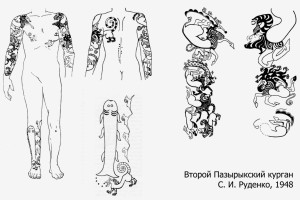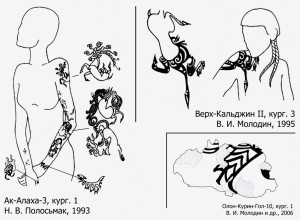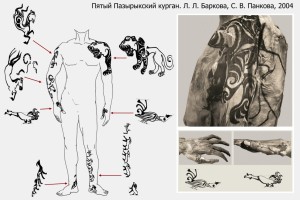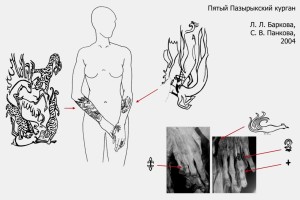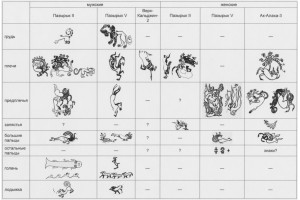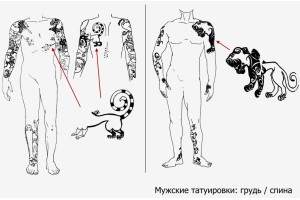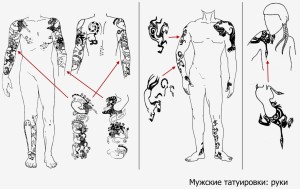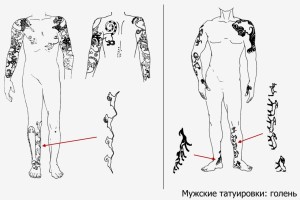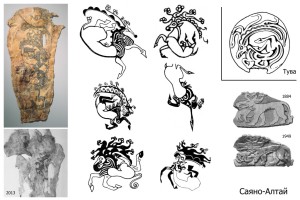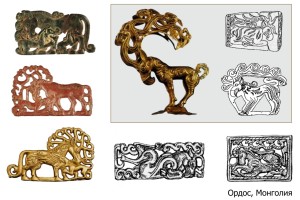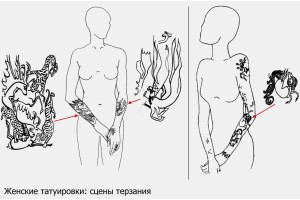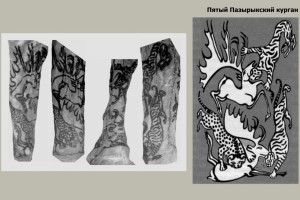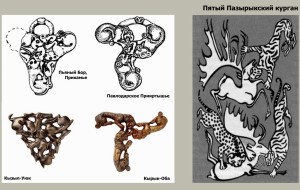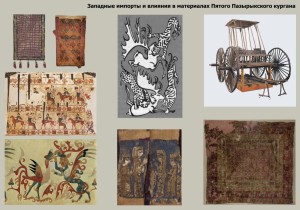�.�. �������, 2016 (original) (raw)
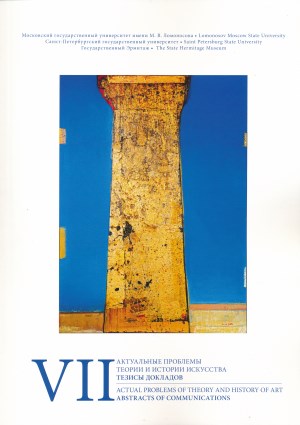 �.�. �������
�.�. �������
����������� ����������
��� �������������� �������������
������� ���� � ��������������.
// ���������� �������� ������ � ������� ��������� � 2016.
�� VII ������������� �����������. ���: �����. 2016. �. 29-30.
[������: ��������� � �������������� �������� �������� ����.]
��. ����� �� academia.edu.
[_��. ����� ����� ��������� ������._]
����������� �������� ������� ����� (������ �������� I ���. �� �.�.) ��������� ������� ������������ ������������ ����������, �� ��������� ��������� ������������ ��������. ����� �������� �� ��� ���������� ������ ����� �������� ���������� ���������� � �������� �����, ��������� �� ������ ���� ������� �� ���� ����������. ������� ����, �� ��� ��������� ��������� ��������������: ����� �������� �� ���������� ������� � ������� ������� �����������. [_���. 5_]
[ ���������� ���-������: ]
���������� ����������� �� ���������������� �������� �� ������� � ������ �������� ������������ ���������� (� ����� ������� ������� � �������) [_���. 1, 3, 4_], �� ����. 1 ���������� ��-�����-3 (�������), �� ����. 3 ���������� ����-��������-2 (�������), � �� ����. 1 ���������� ����-�����-���-10 � ������-�������� �������� (�������) [_���. 2_]. � ��������� ������ ������� ������ ������������ � �� ����������������, �� � ��������� � ���������� ��� ���� ����������� ������, ��� � ���������� ��� ����������. �� ���� ������� ������������ ����������� ��������� � �������� �����.
�������� ������� ���������� �����������: 1) �� ����� ������� ����� � ������� �� ����� � ���� ��� �������������� ������ [_���. 6_]; 2) �� ����� �� ����� �� ����� � ��� ���������� �������� �������, ������ � ��., ������ � ����������� ����, �� ���� � ���������� ������ [_���. 7_]; 3) �� ������ � �������� ������� ������ ������ [_���. 8_].
������ ���������� ����������� � ����� ������� �� ������ ����. �������������� ������� ����������� �������� � ������� ������ ���������� ��������� � ���, ��� ������ ������ ����� ������� ����������� ������, ������ � ������ �������, � ������ ������� ����������� � �������� ���������. �������� � ������ �������� � ����� ����������� ��� ������ � �� �����, �������� ���� ��������� ����������������, ����� � ��������. �� �����, ������� ������ ���� ������ � ���������, � ������� ���������� �� ����� ����� ������� � ����������. �� ��� � ������� ������������� ��������� ����� ��� �������� ����������� ����������� �� ������� ����������� ������.
������� ���� �� ����, �����, ����������� � ��������������� ��� � ������� ���� ������������� ��������� �, ����� ����, �������� ����� ��������������� ������ ��������� �����; �������, � ���� ���� ��������� � ����������� ���������� ������ �� ������� ������������ �������, ��� ��� ���� �������, ��������, ����� � �����-�� �������� ����.
������ ������� � ����� ��������� �������. ��������� �������� ������ �� ����� ���� ������, �� � ���������� ��������� ����� � �������� ����������� �������� �������� �������, ��� ��������������� � ����� ���������. ����������� ��� ����, ��� �� ����������� ������������ ����� ������� ��������� � ����������� ���� [_���. 9_], ����� ��� �� ��� � ���-������� �� ���������� � ����� ������ ����� � ����������� [_���. 10_]. ����������� ����������� ���� ��������; ����������, ��� ��������� ���������, ������ ���������� � �������� �������� ���������� ���� ������, �� ������ ����� ������� ����� ������, �� � ���������� � ������� � ����. ��, ��� ����������� ����� ���� ����������� ����������� ���������� �� ����, ������� � �������� ������������� � ����, ��������, ����������������� ���� ������. ��� ���������� ������������ ����� ������ ������ �������, ���������� ������ ����������� ������ �� ����������� ������, ��� �� ���� ����� ������ � ������ ��� �� �������� �������, � ����. � �����-�� ������ ������� ���������� ����������� �� ������� ������ ����������, � ��� ���������� � ��������� ������� ����������.
������� ���������� ����� ��� ����� �������� � ��������, ��� � ������� �� ���. ����� ����� � ����� ��������, ������������� � ������ [_���. 11_]. �������� ���������� �� ��������, ���������� ��������� �������� [_���. 12_], ���� � ������ �� ����� � �� ������� � ���������� � �������� �������: ������ � ������ �� ��� �������� [_���. 13_]. ������������� ����� ���� ��������, �������� ���� ���������� �������� ����� ���������� � � ���������, ������ ����� ������ � ������ ����� �������� �������� ���. ������������ ����� ����������� ������ ����������� ��� � ��������� ���������� �������� �� ������ ������������ �������, ��� � � ���������� � ��� ��������� [_���. 14_]. ������, ���������� ����� ������� ���� ����� �� ���������� ���������� ��� ���-�������� ������. ��� ��������� �� �����, ������ �����, ���������� ����������, ���������� � ��������� �������� ������ �������� � ������, � ����� ��������� � ���-���������� ��������. ����� �������, �� ���������, ��� ����������� ���������� �� ������ ������� �� ��� ����� �������������� ������� � ������� ��������� �����, �� � ����������� ������� ��������� ����������� �������� � �� �������� � IV-III ��. �� �.�.
������ ��������, ���������� �������� �������� � ���������������� ����������� ���������� �������� ��������, ��������� ����� ������� ���� ������� �������� � ����������� � �� ���������� ��������-������������� ���� �� �����-����������� ���������.
�������� �����: ����������� �������; ����������.
Pavel Azbelev
Pazyryk Tattoos as an Artistic Testimony of Ancient Wars and Marriages. ^
The Pazyryk culture of the Altai Mountains (second half of the 1st millennium ���) is famous for its well-preserved organic materials which survived due to the permafrost beneath the barrows. Of all the extant objects that come from five burials, the oldest tattoos in animal style, found on seven human mummies, attract special interest. Finds of this kind were rather few, but they allow
(29/30)
us to propose certain preliminary systematization: it is possible to distinguish sustainable sets of images different for males and females.
The main male tattoos were located: 1) on the chests left side developing towards the back � a panther or a fantastic predator are pricked; 2) on both arms from shoulders to wrists are the so-called hoofed griffins, horses, etc. shown in a �victimized position�, i.e. with hindquarters twisted; 3) on shins processions of running ibexes. Meaning of a tattoo correlates to the role a body part where it is pricked on played in persons life. Large images of predators placed closer to the heart make us recall that it is heart that is often considered to be the seat of courage, rage, and other characteristics by many folks associated with large predators. Ungulates shown in agony as defeated animals or victims are placed on forearms � it is with their hands that people fight, hunt, and make sacrifices. On legs, which are to be fast and strong, there are running herbivore animals chosen from among the most fast and hardy. All this is common for animal style as a magic mascot influencing a carrier of a certain image.
An image of a hoofed griffin is quite a special phenomenon. Nomads of the Western steppes did not know this Chimera, but in the monuments originating from Northern China and Mongolia images of hoofed griffins are not rare. This is an evidence of certain contacts, and the Pazyryk images of these griffins are shown in the �victimized� position, while in the South and South-East they are depicted in quite different poses and compositions. It is clear that the Pazyryk images are imitative; the Altai nomads should have associated the image of this monster with their neighbours endowing it with the idea of victim, and not only they knew the �owners� of the image, but also feuded and fought with them. The fact that the images which played such a role were irremovably applied to the body, points to the deep roots and, perhaps, even sacred character of this feud. Thus, it seems important that half a century later hoofed griffins disappear from the Pazyryk tattoos, and unlike tattoos from the Second Pazyryk barrow those from the Fifth one show horses writhing in agony on the chieftain�s hand. At a certain moment in Pazyryk peoples history their foreign relations changed their vector, and the change found its place in the tattoo bestiary.
Women�s tattoos had similarities with men�s ones, but also differed from them. Men�s tattoos lack the most vivid scenes with predators attacking ungulates. Analogies to the composition with predators surrounding tortured ungulates are found to the west of the Altai Mountains: belt buckles and other items show the initial story � a victim encircled by three predators. It is clear that the scene on the tattoo is unoriginal, and is distorted to cover the entire forearm. For instance, there are two victims instead of one in the centre of the predators� circle. Communicative vector which is reflected here corresponds with the Western analogies to the finds and imported items from the Fifth Pazyryk barrow. Perhaps, the woman buried there was born in Eastern Kazakhstan or in South-West of Siberia. Most likely, she arrived to the Altai via marriage dependent upon the strengthening ties of the Pazyryk culture and the West � it seems, to the detriment of connections with South-Eastern neighbours. Thus, it is possible that the Pazyryk tattoos not only present a series of images and subjects in Animal style, but also depict a system of the Pazyryk culture�s contacts, and their dynamics in the 4th-3rd centuries ���.
It seems likely that the further study of analogies and chronological correlation of finds will help us to find out what events are echoed in tattoos � from ancient nomadic wars against China to the Graeco-Macedonian expansion.
Keywords: the Pazyryk barrows; tattoos.
�����������, ���������� �� �����������. ^
